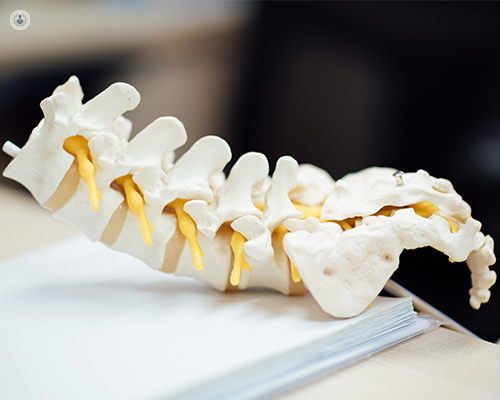Understanding lumbar decompression: A key procedure for relieving spinal nerve pressure
Escrito por:Lumbar decompression surgery is a procedure designed to relieve pressure on the spinal nerves in the lower back. It’s commonly performed to treat conditions that arise when the spinal nerves become compressed, such as spinal stenosis, herniated discs, or sciatica. This surgery can help alleviate chronic pain, weakness, numbness, or other symptoms affecting the legs and lower back, often enhancing a patient’s mobility and quality of life.

Lumbar decompression procedures
Lumbar decompression procedures typically involve the removal or reshaping of bony structures that press on the nerves. There are several types of decompression surgery, including laminectomy, discectomy, and foraminotomy. In a laminectomy, a portion of the vertebra called the lamina is removed to create more space within the spinal canal, reducing nerve pressure.
A discectomy targets herniated discs, removing the damaged portion to ease nerve compression, while a foraminotomy widens the spaces where nerves exit the spine. Sometimes, multiple decompression techniques are combined to ensure optimal relief.
Surgical approach
The surgical approach used in lumbar decompression is generally minimally invasive, involving small incisions that reduce recovery time and minimise scarring. Patients often experience significant pain relief and functional improvements soon after surgery, with a shorter hospital stay.
Advances in technology, such as minimally invasive tools and techniques, have made lumbar decompression safer and more effective, decreasing the likelihood of complications. However, candidates for surgery are usually those who have not found sufficient relief through conservative treatments like physical therapy, medications, or spinal injections.
Recovery
Postoperative recovery is critical for long-term success. Patients often engage in physical therapy to rebuild strength and flexibility, with most able to resume normal activities within a few weeks. The extent of recovery depends on the individual’s overall health and the nature of the condition being treated, but lumbar decompression generally offers durable relief for those with persistent symptoms.
Lumbar decompression can significantly enhance a patient’s quality of life by reducing pain and improving mobility, especially for individuals facing debilitating symptoms from nerve compression. While surgery is a serious consideration, lumbar decompression is often a highly effective solution when other treatments have failed, providing lasting relief and enabling patients to return to daily activities without discomfort.


